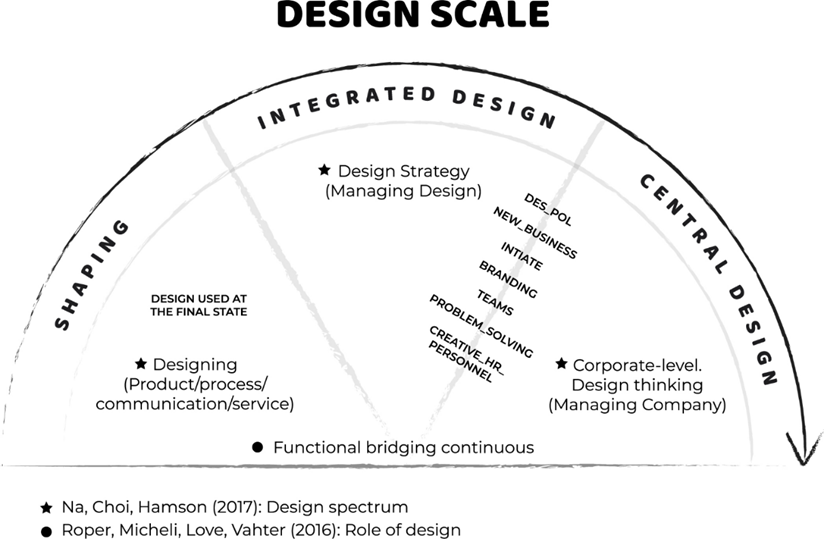Dissertation: Don’t forget design: design boosts innovations


The research uses Danish community innovation survey in 2010 and 2012, which include in-depth questions on firms’ design activities. The dissertation shows that shaping and design thinking support both product and process innovations.
– It’s easy to see design only as the wrapping or appearance of a new innovation. However, this is not the complete picture. Design may even inspire innovations and solve user problems. Carita Eklund clarifies.
The dissertation demonstrates the role of design in innovation through the design scale concept. The first level is shaping, where design is applied in the last stages of innovation process. The two other more advanced usages of design are integrated and central design. The results show that all of the levels of design scale support innovativeness though integrated design is the biggest contributor to firm or market novelty.

Jobs from innovation competences
Innovation competences are becoming increasingly important for growth and competitiveness. Marketing and management competences and the share of designers are strongly related to high growth in firms. Carita Eklund shows that organizational capital, and for example ICT capital, predicts which firms achieve high growth. These firms generate the most of new jobs, thus supporting employment and the expensive Nordic welfare state. Further, they are likely to renew the growth. Thus, the recognition of these firms are important for both politicians and investors.
Carita Eklund shows with Danish data that a firm’s intangible capital, indicating their ability to innovate, forecasts if it becomes a high growth firm. The data covers firms during 2005–2013.
– Different kinds of intangible capital affect differently the probability of achieving high growth. Yet, organizational capital, i.e., marketing and management competences, supports the probability of high growth during the financial crises. The share of designers among employees has predictive power in non-crisis periods. Carita Eklund emphasizes.
Further information
Carita Eklund, +45 27 52 0007, ceklund(at)ps.au.dk
Eklund, Carita (2019). Innovation Capabilities, Design and Cutting Edge : Innovative Growth in the 21st Century. Acta Wasaensia 426. Doctoral dissertation. Vaasan yliopisto. University of Vaasa.
Publication pdf: http://urn.fi/URN:ISBN:978-952-476-873-3
Eklund graduated from the Mathematical High School of Helsinki in 2010. She finished her Master of Science degree in Economics and Business Administration at the University of Vaasa in 2013. After that, she continued as a doctoral student. During her studies she visited Johannes Gutenberg-Universität Mainz, Stanford University and Aarhus University. Seh currently works as a researchers at the Aarhus University, Danish Centre for Studies in Research and Research Policy CFA.
Public Defence
The public examination of M.Sc. Carita Eklund’s doctoral dissertation” Innovation Capabilities, Design and Cutting Edge: Innovative Growth in the 21 Century” will be held on Friday 30 August at noon in the auditorium Kurtén, University of Vaasa. The field of dissertation is economics.
Adjunct Professor Tuomas Takalo (Bank of Finland) will act as opponent and professor Hannu Piekkola as custos. The examination will be held in English.